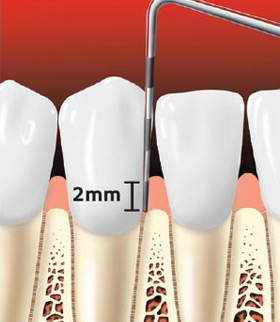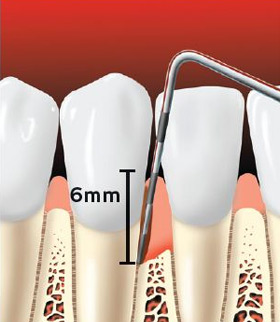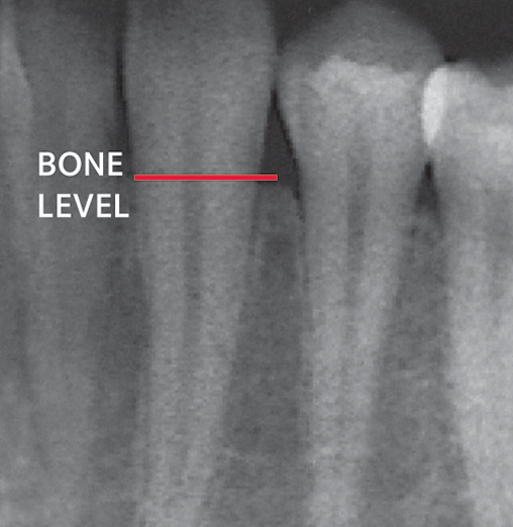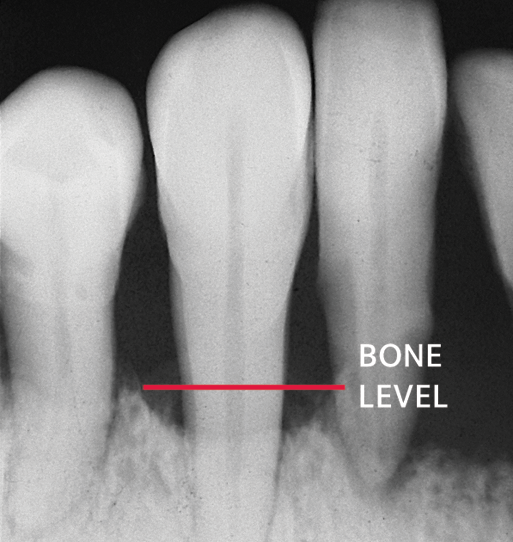Periodontal (Gum) Disease:
Preventing Periodontal Disease:
What is Periodontal Disease?
Periodontal (gum) disease is an infection. It affects the tissues and bone that support the teeth.
Healthy gum tissue fits like a cuff around each tooth. When someone has periodontal disease, the gum tissue pulls away from the tooth. As the disease gets worse, the tissue and bone that support the tooth are damaged. Over time, teeth may fall out or need to be removed. Treating periodontal disease in the early stages can help prevent tooth loss.
Periodontal Disease and Whole-Body Health
Periodontal disease has been linked to some other diseases. People with diabetes or heart disease are more likely to get periodontal disease. Strokes and high stress also may be related to periodontal disease. Researchers are still studying these links.
Warning Signs of Gum Disease
If you notice any of the signs below, see your dentist. However, you can have periodontal disease and not notice any of these warning signs. That is why regular dental checkups are very important.
- gums that bleed when you brush or floss
- red, swollen, or tender gums
- gums that have pulled away from your teeth
- bad breath that doesn’t go away
- pus between the teeth and gums
- loose or separating teeth
- a change in the way your teeth fit together when you bite
- a change in the fit of partial dentures
What Causes Periodontal Disease?
Periodontal disease is caused by plaque, a sticky film that is always forming on your teeth. Plaque contains bacteria that can irritate and inflame the gums.
Inflamed gums can pull away from the teeth and form spaces called “pockets.” These pockets collect more bacteria. If the infected pockets are not treated, the gum disease can get worse.
How Can I Prevent Periodontal Disease?
- Brush your teeth twice a day with fluoride toothpaste.
- Floss or use another between-the-tooth cleaner daily to remove plaque and bits of food from areas your toothbrush can’t reach.
- Your dentist or hygienist may recommend using a germ-fighting mouthrinse or other products.
- Eat a healthy diet and limit snacks. Find out more at the website choosemyplate.gov.
- Visit your dentist regularly. If plaque stays on your teeth, it hardens into tartar (also called “calculus”). Professional cleanings are the only way to remove tartar, which traps bacteria along the gumline.
Are You at Risk?
Anyone can get periodontal disease. These things can increase the risk:
- Poor oral hygiene
- Tobacco. People who smoke or chew tobacco are more likely to have periodontal disease.
- Diseases that affect the whole body-such as diabetes and AIDS-lower resistance to infection. If you have one of these diseases, you are at higher risk for periodontal disease.
- Many medications, such as steroids and blood pressure drugs, can affect your gums. Some have side effects that reduce saliva, which can affect soft tissues and make tooth decay more likely. Tell your dentist about all the medications you take and any changes in your health.
- Teens, pregnant women and those taking birth control pills face changes in hormone levels. These changes can cause gums to become more sensitive to plaque bacteria.
- Genes may play a role. If your parents wear dentures or you have a family history of tooth loss, be extra alert for changes to your gums.
- The bacteria that cause periodontal disease may be passed from parents to children and between partners through saliva.
Stages of Periodontal Diseases
Checking for Periodontal Disease
Your dentist or hygienist uses a periodontal probe to gently measure the depth of the pockets around each tooth. When teeth are healthy, the pocket depth is usually three millimeters or less. Generally, the more severe the disease, the deeper the pocket.
Dental x-rays usually are taken to check for the amount of bone supporting the teeth. If the dentist finds periodontal disease, he or she may provide treatment or may refer you to a periodontist (a dentist who specializes in the prevention, diagnosis and treatment of periodontal diseases).
You don’t have to lose teeth to periodontal disease. Brush, clean between your teeth, eat a healthy diet and schedule regular dental visits for a lifetime of healthy smiles.















